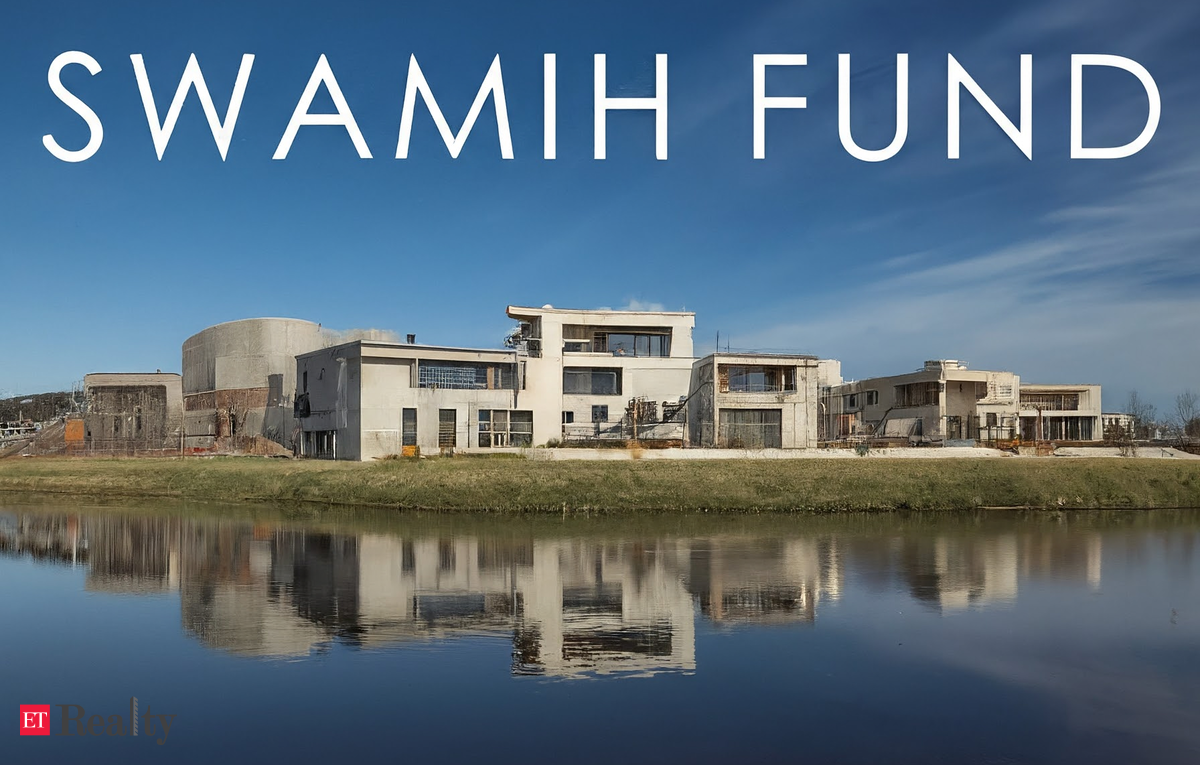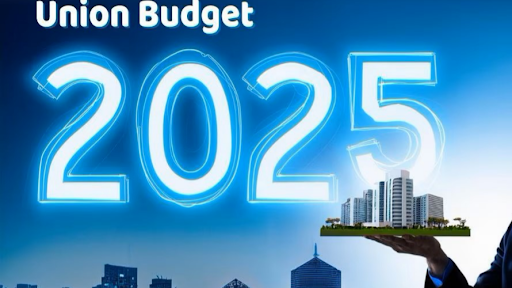The Union Budget 2025, presented by Finance Minister Nirmala Sitharaman, has introduced several key reforms that are expected to transform the Indian real estate sector. From tax relief for homebuyers and rental housing incentives to infrastructure development and affordable housing support, the budget takes a holistic approach to boosting the industry.
With increasing disposable income, tax benefits, and significant investments in urban and rural infrastructure, this budget is set to drive real estate growth across various segments. Let’s dive into the 12 key highlights of the budget and analyze how they will impact the Indian real estate landscape.
Also Read:- How To Check RERA Registered Projects in Haryana?
No Income Tax on Annual Income up to ₹12 Lakhs

Overview:
The government has raised the income tax exemption limit to ₹12 lakh per annum, a move aimed at boosting the purchasing power of the middle class.
Implications on Real Estate:
- Higher Disposable Income – More savings enable individuals to invest in property or pay off home loans faster.
- Affordable Housing Growth – Increased affordability may drive demand in budget-friendly housing segments.
- Reduced Financial Stress – Homebuyers may find it easier to manage loan EMIs, improving creditworthiness.
Illustration:
| Annual Income (₹) |
Previous Tax Rate (%) |
New Tax Rate (%) |
Savings (₹) |
| 10,00,000 |
10 |
0 |
1,00,000 |
| 12,00,000 |
10 |
0 |
1,20,000 |
Rental Housing Reforms: No Deemed Rent on Second Self-Occupied Property
Overview:
Previously, individuals owning more than one self-occupied property had to pay tax on the notional rent of the second home. Now, homeowners can declare two properties as self-occupied without additional tax liability.
Implications on Real Estate:
- Encouragement for Multiple Home Ownership – People can invest in second homes without tax penalties.
- Boost for Holiday and Weekend Homes – Demand for properties in tourist and second-home destinations is likely to rise.
- More Investment in Underutilized Properties – Owners may hold onto properties instead of selling due to tax concerns.
Rental Housing Reforms: Increased TDS Threshold on Rental Income
Overview:
The threshold for Tax Deducted at Source (TDS) on rental income has been raised from ₹2.4 lakh to ₹7.6 lakh per annum.
Implications on Real Estate:
- Lower Tax Burden for Landlords – Reduced tax compliance obligations make rental property ownership more attractive.
- Encouragement for Rental Market Growth – More rental investments could lead to a balanced supply-demand scenario.
- Affordable Rents for Tenants – Higher rental property supply may keep rental prices stable.
Also Read:- Money Plant Vastu 2025: Tips | Direction | Pros & Cons – Housiey.com
Illustration:
| Rental Income (₹) |
Previous TDS Applicability |
New TDS Applicability |
| 2,50,000 |
Yes |
No |
| 7,50,000 |
Yes |
No |
| 8,00,000 |
Yes |
Yes |
SWAMIH Fund 2: ₹15,000 Crore Allocation for Stalled Projects

Overview:
The government has allocated ₹15,000 crore under SWAMIH Fund 2 to facilitate the completion of over 1 lakh stalled housing units.
Implications on Real Estate:
- Faster Completion of Delayed Projects – Homebuyers awaiting possession will see quicker deliveries.
- Revival of Builder Confidence – Developers facing liquidity issues will receive financial support.
- Improved Market Sentiment – Reduced project delays may boost buyer confidence in under-construction properties.
Growth in Tier 2 & 3 Cities: Expansion of UDAN Scheme

Overview:
The UDAN scheme now includes 120 new destinations to improve air connectivity, especially in smaller cities.
Implications on Real Estate:
- Rising Demand in Smaller Cities – Improved connectivity will encourage migration and housing development.
- New Investment Hotspots – Tier 2 and 3 cities will see increased demand for residential and commercial properties.
- Boost to Local Economies – More infrastructure development can increase job opportunities.
Rural Housing: Increased Kisan Credit Card (KCC) Loan Limit

Overview:
The loan limit under the Kisan Credit Card (KCC) has been raised from ₹3 lakh to ₹7 lakh.
Implications on Real Estate:
- Better Housing Options in Rural Areas – Farmers can now invest in better housing infrastructure.
- Growth in Agri-Linked Real Estate – Increased funding supports rural warehouses, cold storage, and processing units.
- Strengthened Rural Economy – Easier access to credit promotes financial stability in villages.
Infrastructure Development: ₹1 Lakh Crore Urban Challenge Fund

Overview:
A new Urban Challenge Fund worth ₹1 lakh crore has been established to finance up to 25% of urban redevelopment projects.
Implications on Real Estate:
- Upgraded Infrastructure – Redevelopment projects will enhance living conditions.
- Increase in Property Values – Improved urban infrastructure may result in appreciation of real estate prices.
- Better Quality of Life – Investments in water, sanitation, and public transport will benefit residents.
Infrastructure Development: ₹50 Lakh Crore Asset Monetization Plan
Overview:
The government plans to monetize public infrastructure assets worth ₹50 lakh crore over the next five years.
Implications on Real Estate:
- Boost for Private Investments – Increased private sector involvement in real estate development.
- Improved Public Infrastructure – Enhanced roads, transport hubs, and utilities may increase housing demand.
- More PPP (Public-Private Partnerships) – Developers will have new opportunities for urban expansion.
Real Estate Financing: ₹1.5 Lakh Crore for MSMEs
Overview:
₹1.5 lakh crore has been allocated to support Micro, Small, and Medium Enterprises (MSMEs).
Implications on Real Estate:
- Rise in Demand for Industrial Spaces – More startups and small businesses will need office and warehouse spaces.
- Increased Commercial Leasing – More companies may opt for rental spaces in business districts.
- Strengthening of SME Real Estate Market – Developers may build more industrial parks and business hubs.
Real Estate Financing: Higher FDI in Insurance and Infrastructure

Overview:
Foreign Direct Investment (FDI) in insurance has been raised from 74% to 100%, while sovereign wealth and pension funds can invest in real estate till 2030.
Implications on Real Estate:
- Increased Foreign Investment – More funds flowing into real estate development.
- Boost for Commercial Real Estate – MNCs and businesses may expand operations in India.
- Larger-Scale Projects – Higher investments could accelerate mega infrastructure projects.
Real Estate Financing: ₹10 Lakh Crore via Market Borrowings
Overview:
The government plans to raise ₹10 lakh crore through market borrowings for infrastructure projects.
Implications on Real Estate:
- Higher Capital Flow to Developers – More funding will be available for new projects.
- Faster Execution of Large-Scale Projects – Increased liquidity will help complete pending developments.
- More Affordable Housing – Easier financing could lead to cost-effective housing solutions.
Real Estate Financing: Extended Investment Deadline for Global Funds
Overview:
The investment deadline for Sovereign Wealth and Pension Funds in infrastructure and real estate has been extended till March 31, 2030.
Implications on Real Estate:
- Large-Scale Infrastructure Investments – More funding for metro, highways, and smart city projects.
- Increased Institutional Investments – Pension funds may invest heavily in commercial and residential properties.
- Stable Long-Term Growth – Long-term investments will ensure market stability.
The Union Budget 2025 has introduced several key reforms that will shape the future of India’s real estate sector. Beyond tax benefits and housing initiatives, the budget also focuses on urbanization, affordable housing, and commercial real estate growth. Let’s explore how these developments will impact the industry:
Urbanization and Smart Cities: The Next Growth Frontier
The Union Budget 2025 continues India’s vision of transforming urban centers into globally competitive cities. With rapid urbanization, there is a pressing need for better infrastructure, sustainable housing, and efficient public services. The government has allocated substantial funds for urban development, including:
- ₹1 Lakh Crore Urban Challenge Fund: This will finance up to 25% of urban development projects, including redevelopment, smart infrastructure, water, and sanitation facilities.
- Asset Monetization Plan: ₹10 lakh crore will be unlocked by monetizing public infrastructure, allowing private players to invest in real estate and urban projects.
- Expansion of Metro and Public Transport: Major metropolitan cities will see extended metro lines and modernized bus networks, reducing traffic congestion and making commuting easier.
- Revamped UDAN Scheme: By connecting 120 new destinations, the scheme will enhance connectivity between smaller cities and major business hubs, driving up property demand.
With these initiatives, Tier 2 and Tier 3 cities are set to become the next urban growth centers, attracting businesses, startups, and residential development. Investors can expect a surge in land prices and increased demand for commercial and residential properties in these regions.
Affordable Housing and Middle-Class Homebuyers: A Budget-Friendly Boost
The budget has introduced several measures to make homeownership more accessible, especially for middle-class buyers. Some of the key initiatives include:
Tax Benefits for Homebuyers
- Individuals earning up to ₹12 lakh per annum are now exempt from income tax, leaving them with more disposable income to invest in home purchases.
- Reduction in EMI burdens as tax savings allow homebuyers to increase loan down payments or prepay their mortgages.
SWAMIH Fund 2: ₹15,000 Crore to Complete Stalled Projects
- Over 1 lakh stalled housing units will be completed, benefiting buyers waiting for possession.
- Ensures liquidity in the real estate sector, helping developers complete projects on time.
Rental Housing Reforms
- Homeowners can now claim ‘nil annual value’ for two self-occupied properties, reducing their tax liabilities.
- TDS threshold on rental income has increased from ₹2.4 lakh to ₹6 lakh per annum, benefiting landlords and encouraging rental housing investments.
Rural Housing Development
- The Kisan Credit Card (KCC) loan limit has increased from ₹3 lakh to ₹7 lakh, helping rural families secure funding for home construction.
These reforms make homeownership more achievable for middle-income families while strengthening the rental and affordable housing sectors.
Impact on Commercial Real Estate: Warehousing, Retail, and Office Spaces
The commercial real estate sector is expected to grow significantly, driven by increased investments, infrastructure expansion, and policy changes.
Growth in Warehousing and Logistics Real Estate
- MSME funding boost: ₹1.5 lakh crore allocated to MSMEs will drive demand for industrial warehouses and logistics hubs.
- Foreign Investment in Real Estate: FDI in insurance has been raised from 74% to 100%, allowing insurance companies to invest more in commercial real estate.
- E-commerce boom: With improved last-mile connectivity under the revamped UDAN scheme, warehousing demand in Tier 2 & 3 cities is expected to surge.
Retail and Shopping Complexes Expansion
- More disposable income for middle-class families means higher consumer spending, benefiting retail real estate.
- Urban redevelopment plans will lead to modern shopping complexes replacing outdated commercial hubs.
- Foreign investments from sovereign wealth and pension funds will boost the retail infrastructure sector.
Office Spaces and Co-Working Growth
- The ₹10 lakh crore market borrowings will increase liquidity, making commercial project financing easier.
- Tech startups, IT firms, and corporates will expand operations due to improved infrastructure and tax incentives.
- The rise of hybrid work models will lead to a shift in demand from large office spaces to flexible co-working environments.
With large-scale investments and policy reforms, commercial real estate is poised for expansion, creating new opportunities for investors and developers across multiple sectors.
Conclusion
The Union Budget 2025 brings a transformative shift to India’s real estate sector, addressing key areas such as home affordability, rental housing, infrastructure growth, and financial liquidity. The tax relief on income up to ₹12 lakh enhances homebuyers’ purchasing power, while rental housing reforms encourage investments in the sector. Infrastructure-focused allocations, including the ₹1 lakh crore Urban Challenge Fund and the monetization of public assets, will lead to urban expansion, higher property values, and an improved quality of life.
Moreover, the infusion of liquidity through SWAMIH Fund 2, enhanced MSME funding, and extended foreign investment timelines ensure steady financial backing for developers, reducing project delays and boosting real estate growth. The development of Tier 2 and Tier 3 cities under the revamped UDAN scheme also fosters regional growth, ensuring that urbanization is not limited to metro cities alone.
With favorable policies in place, now is the right time for homebuyers, investors, and developers to make strategic decisions. Whether you’re looking to purchase a new home, invest in rental properties, or expand your real estate business, these budgetary measures provide the perfect foundation for growth.
Looking for a property in Haryana? Learn how to check RERA-registered projects in Haryana to ensure your investment is secure. Read our blog now!
FAQs
The Union Budget 2025, presented by Finance Minister Nirmala Sitharaman, has introduced several key reforms that are expected to transform the Indian real estate sector. From tax relief for homebuyers and rental housing incentives to infrastructure development and affordable housing support, the budget takes a holistic approach to boosting the industry.
With increasing disposable income, tax benefits, and significant investments in urban and rural infrastructure, this budget is set to drive real estate growth across various segments. Let’s dive into the 12 key highlights of the budget and analyze how they will impact the Indian real estate landscape.
Also Read:- How To Check RERA Registered Projects in Haryana?
No Income Tax on Annual Income up to ₹12 Lakhs

Overview:
The government has raised the income tax exemption limit to ₹12 lakh per annum, a move aimed at boosting the purchasing power of the middle class.
Implications on Real Estate:
- Higher Disposable Income – More savings enable individuals to invest in property or pay off home loans faster.
- Affordable Housing Growth – Increased affordability may drive demand in budget-friendly housing segments.
- Reduced Financial Stress – Homebuyers may find it easier to manage loan EMIs, improving creditworthiness.
Illustration:
| Annual Income (₹) |
Previous Tax Rate (%) |
New Tax Rate (%) |
Savings (₹) |
| 10,00,000 |
10 |
0 |
1,00,000 |
| 12,00,000 |
10 |
0 |
1,20,000 |
Rental Housing Reforms: No Deemed Rent on Second Self-Occupied Property
Overview:
Previously, individuals owning more than one self-occupied property had to pay tax on the notional rent of the second home. Now, homeowners can declare two properties as self-occupied without additional tax liability.
Implications on Real Estate:
- Encouragement for Multiple Home Ownership – People can invest in second homes without tax penalties.
- Boost for Holiday and Weekend Homes – Demand for properties in tourist and second-home destinations is likely to rise.
- More Investment in Underutilized Properties – Owners may hold onto properties instead of selling due to tax concerns.
Rental Housing Reforms: Increased TDS Threshold on Rental Income
Overview:
The threshold for Tax Deducted at Source (TDS) on rental income has been raised from ₹2.4 lakh to ₹7.6 lakh per annum.
Implications on Real Estate:
- Lower Tax Burden for Landlords – Reduced tax compliance obligations make rental property ownership more attractive.
- Encouragement for Rental Market Growth – More rental investments could lead to a balanced supply-demand scenario.
- Affordable Rents for Tenants – Higher rental property supply may keep rental prices stable.
Also Read:- Money Plant Vastu 2025: Tips | Direction | Pros & Cons – Housiey.com
Illustration:
| Rental Income (₹) |
Previous TDS Applicability |
New TDS Applicability |
| 2,50,000 |
Yes |
No |
| 7,50,000 |
Yes |
No |
| 8,00,000 |
Yes |
Yes |
SWAMIH Fund 2: ₹15,000 Crore Allocation for Stalled Projects

Overview:
The government has allocated ₹15,000 crore under SWAMIH Fund 2 to facilitate the completion of over 1 lakh stalled housing units.
Implications on Real Estate:
- Faster Completion of Delayed Projects – Homebuyers awaiting possession will see quicker deliveries.
- Revival of Builder Confidence – Developers facing liquidity issues will receive financial support.
- Improved Market Sentiment – Reduced project delays may boost buyer confidence in under-construction properties.
Growth in Tier 2 & 3 Cities: Expansion of UDAN Scheme

Overview:
The UDAN scheme now includes 120 new destinations to improve air connectivity, especially in smaller cities.
Implications on Real Estate:
- Rising Demand in Smaller Cities – Improved connectivity will encourage migration and housing development.
- New Investment Hotspots – Tier 2 and 3 cities will see increased demand for residential and commercial properties.
- Boost to Local Economies – More infrastructure development can increase job opportunities.
Rural Housing: Increased Kisan Credit Card (KCC) Loan Limit

Overview:
The loan limit under the Kisan Credit Card (KCC) has been raised from ₹3 lakh to ₹7 lakh.
Implications on Real Estate:
- Better Housing Options in Rural Areas – Farmers can now invest in better housing infrastructure.
- Growth in Agri-Linked Real Estate – Increased funding supports rural warehouses, cold storage, and processing units.
- Strengthened Rural Economy – Easier access to credit promotes financial stability in villages.
Infrastructure Development: ₹1 Lakh Crore Urban Challenge Fund

Overview:
A new Urban Challenge Fund worth ₹1 lakh crore has been established to finance up to 25% of urban redevelopment projects.
Implications on Real Estate:
- Upgraded Infrastructure – Redevelopment projects will enhance living conditions.
- Increase in Property Values – Improved urban infrastructure may result in appreciation of real estate prices.
- Better Quality of Life – Investments in water, sanitation, and public transport will benefit residents.
Infrastructure Development: ₹50 Lakh Crore Asset Monetization Plan
Overview:
The government plans to monetize public infrastructure assets worth ₹50 lakh crore over the next five years.
Implications on Real Estate:
- Boost for Private Investments – Increased private sector involvement in real estate development.
- Improved Public Infrastructure – Enhanced roads, transport hubs, and utilities may increase housing demand.
- More PPP (Public-Private Partnerships) – Developers will have new opportunities for urban expansion.
Real Estate Financing: ₹1.5 Lakh Crore for MSMEs
Overview:
₹1.5 lakh crore has been allocated to support Micro, Small, and Medium Enterprises (MSMEs).
Implications on Real Estate:
- Rise in Demand for Industrial Spaces – More startups and small businesses will need office and warehouse spaces.
- Increased Commercial Leasing – More companies may opt for rental spaces in business districts.
- Strengthening of SME Real Estate Market – Developers may build more industrial parks and business hubs.
Real Estate Financing: Higher FDI in Insurance and Infrastructure

Overview:
Foreign Direct Investment (FDI) in insurance has been raised from 74% to 100%, while sovereign wealth and pension funds can invest in real estate till 2030.
Implications on Real Estate:
- Increased Foreign Investment – More funds flowing into real estate development.
- Boost for Commercial Real Estate – MNCs and businesses may expand operations in India.
- Larger-Scale Projects – Higher investments could accelerate mega infrastructure projects.
Real Estate Financing: ₹10 Lakh Crore via Market Borrowings
Overview:
The government plans to raise ₹10 lakh crore through market borrowings for infrastructure projects.
Implications on Real Estate:
- Higher Capital Flow to Developers – More funding will be available for new projects.
- Faster Execution of Large-Scale Projects – Increased liquidity will help complete pending developments.
- More Affordable Housing – Easier financing could lead to cost-effective housing solutions.
Real Estate Financing: Extended Investment Deadline for Global Funds
Overview:
The investment deadline for Sovereign Wealth and Pension Funds in infrastructure and real estate has been extended till March 31, 2030.
Implications on Real Estate:
- Large-Scale Infrastructure Investments – More funding for metro, highways, and smart city projects.
- Increased Institutional Investments – Pension funds may invest heavily in commercial and residential properties.
- Stable Long-Term Growth – Long-term investments will ensure market stability.
The Union Budget 2025 has introduced several key reforms that will shape the future of India’s real estate sector. Beyond tax benefits and housing initiatives, the budget also focuses on urbanization, affordable housing, and commercial real estate growth. Let’s explore how these developments will impact the industry:
Urbanization and Smart Cities: The Next Growth Frontier
The Union Budget 2025 continues India’s vision of transforming urban centers into globally competitive cities. With rapid urbanization, there is a pressing need for better infrastructure, sustainable housing, and efficient public services. The government has allocated substantial funds for urban development, including:
- ₹1 Lakh Crore Urban Challenge Fund: This will finance up to 25% of urban development projects, including redevelopment, smart infrastructure, water, and sanitation facilities.
- Asset Monetization Plan: ₹10 lakh crore will be unlocked by monetizing public infrastructure, allowing private players to invest in real estate and urban projects.
- Expansion of Metro and Public Transport: Major metropolitan cities will see extended metro lines and modernized bus networks, reducing traffic congestion and making commuting easier.
- Revamped UDAN Scheme: By connecting 120 new destinations, the scheme will enhance connectivity between smaller cities and major business hubs, driving up property demand.
With these initiatives, Tier 2 and Tier 3 cities are set to become the next urban growth centers, attracting businesses, startups, and residential development. Investors can expect a surge in land prices and increased demand for commercial and residential properties in these regions.
Affordable Housing and Middle-Class Homebuyers: A Budget-Friendly Boost
The budget has introduced several measures to make homeownership more accessible, especially for middle-class buyers. Some of the key initiatives include:
Tax Benefits for Homebuyers
- Individuals earning up to ₹12 lakh per annum are now exempt from income tax, leaving them with more disposable income to invest in home purchases.
- Reduction in EMI burdens as tax savings allow homebuyers to increase loan down payments or prepay their mortgages.
SWAMIH Fund 2: ₹15,000 Crore to Complete Stalled Projects
- Over 1 lakh stalled housing units will be completed, benefiting buyers waiting for possession.
- Ensures liquidity in the real estate sector, helping developers complete projects on time.
Rental Housing Reforms
- Homeowners can now claim ‘nil annual value’ for two self-occupied properties, reducing their tax liabilities.
- TDS threshold on rental income has increased from ₹2.4 lakh to ₹6 lakh per annum, benefiting landlords and encouraging rental housing investments.
Rural Housing Development
- The Kisan Credit Card (KCC) loan limit has increased from ₹3 lakh to ₹7 lakh, helping rural families secure funding for home construction.
These reforms make homeownership more achievable for middle-income families while strengthening the rental and affordable housing sectors.
Impact on Commercial Real Estate: Warehousing, Retail, and Office Spaces
The commercial real estate sector is expected to grow significantly, driven by increased investments, infrastructure expansion, and policy changes.
Growth in Warehousing and Logistics Real Estate
- MSME funding boost: ₹1.5 lakh crore allocated to MSMEs will drive demand for industrial warehouses and logistics hubs.
- Foreign Investment in Real Estate: FDI in insurance has been raised from 74% to 100%, allowing insurance companies to invest more in commercial real estate.
- E-commerce boom: With improved last-mile connectivity under the revamped UDAN scheme, warehousing demand in Tier 2 & 3 cities is expected to surge.
Retail and Shopping Complexes Expansion
- More disposable income for middle-class families means higher consumer spending, benefiting retail real estate.
- Urban redevelopment plans will lead to modern shopping complexes replacing outdated commercial hubs.
- Foreign investments from sovereign wealth and pension funds will boost the retail infrastructure sector.
Office Spaces and Co-Working Growth
- The ₹10 lakh crore market borrowings will increase liquidity, making commercial project financing easier.
- Tech startups, IT firms, and corporates will expand operations due to improved infrastructure and tax incentives.
- The rise of hybrid work models will lead to a shift in demand from large office spaces to flexible co-working environments.
With large-scale investments and policy reforms, commercial real estate is poised for expansion, creating new opportunities for investors and developers across multiple sectors.
Conclusion
The Union Budget 2025 brings a transformative shift to India’s real estate sector, addressing key areas such as home affordability, rental housing, infrastructure growth, and financial liquidity. The tax relief on income up to ₹12 lakh enhances homebuyers’ purchasing power, while rental housing reforms encourage investments in the sector. Infrastructure-focused allocations, including the ₹1 lakh crore Urban Challenge Fund and the monetization of public assets, will lead to urban expansion, higher property values, and an improved quality of life.
Moreover, the infusion of liquidity through SWAMIH Fund 2, enhanced MSME funding, and extended foreign investment timelines ensure steady financial backing for developers, reducing project delays and boosting real estate growth. The development of Tier 2 and Tier 3 cities under the revamped UDAN scheme also fosters regional growth, ensuring that urbanization is not limited to metro cities alone.
With favorable policies in place, now is the right time for homebuyers, investors, and developers to make strategic decisions. Whether you’re looking to purchase a new home, invest in rental properties, or expand your real estate business, these budgetary measures provide the perfect foundation for growth.
Looking for a property in Haryana? Learn how to check RERA-registered projects in Haryana to ensure your investment is secure. Read our blog now!
FAQs











